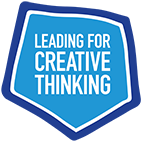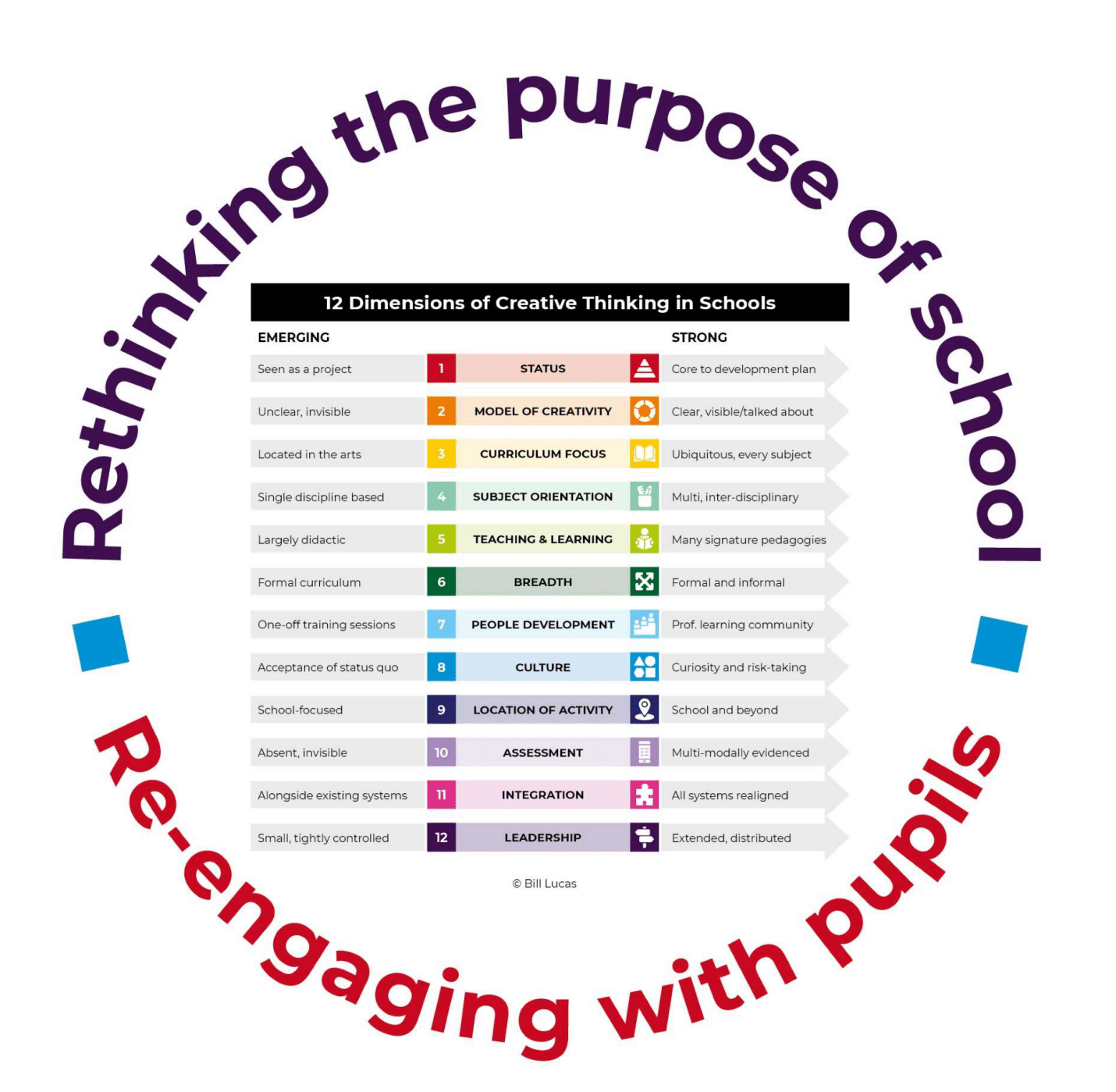A strategy for embedding creative thinking in schools over time.
Lucas, B. (2025). The development of a conceptual framework for embedding creativity in schools. Thinking Skills and Creativity, 58,101874. Read the whole article here.
Summary
Embedding creative thinking in schools is a challenge. Curricula are organised around individual subjects and creativity is not assessed. But over the last two decades Bill Lucas and the many partners with whom he has collaborated have seen:
(a) a growing evidence base as to what work, and
(b) many promising school practices.
This twelve dimensional framework suggests some of the ways in which leaders are moving beyond one-off projects towards ensuring that there are opportunities for young people to develop their creativity in all aspects of school life.
Two key priorities
Schools which prioritise creativity almost inevitably ask themselves fundamental question - what is the point of school? In particular they explore ways in which both individual subjects and interdisciplinary dispositions such as creative thinking can be systematically developed. They also realise see more proactive roles for pupils in this process.
School leaders who really value creativity:
1. Embed it in their school’s strategic plan.
2. Ensure that there is a clear understanding of what creativity is, that this is highly visible and that a common language develops around this.
3. Realise that it has a place in every subject of the curriculum and is an opportunity for every teacher to be actively involved.
4. Rapidly recognise that creativity is no respecter of subject boundaries!
5. See that, while the curriculum is the means by which pupils’ lives are organised, it is the way that it is ‘delivered’ that really shapes the experience of young people; the pedagogies teachers choose have the largest influence on learners’ experiences in the classroom.
6. Look for opportunities beyond the formal curriculum to undertake self-directed learning during breaktimes and in after-school activities.
7. See ongoing professional learning as key to changing hearts and minds and building staff capability rather than one-off INSET.
8. Actively promote curiosity, risk-taking and experimentation.
9. Look beyond school to find partners who can support them.
10. Shift the language away from ‘measurement’ towards ‘evidencing’ pupil’s progress, prioritising formative assessment.
11. Realise that if the development of creativity in pupils is a priority then almost all of its systems will need to be realigned.
12. See leading for creative thinking in schools as a multi-faceted, complex, distributed and system-wide task.
Reflecting together
- Do the two key priorities resonate with you?
- Which of the twelve dimensions are you most confident about?
- Which of the twelve dimensions do you find most challenging? Why is this?
- After reading the article in full and drawing on your own experiences, what advice would you give to school leaders who are just starting out on their journey?

